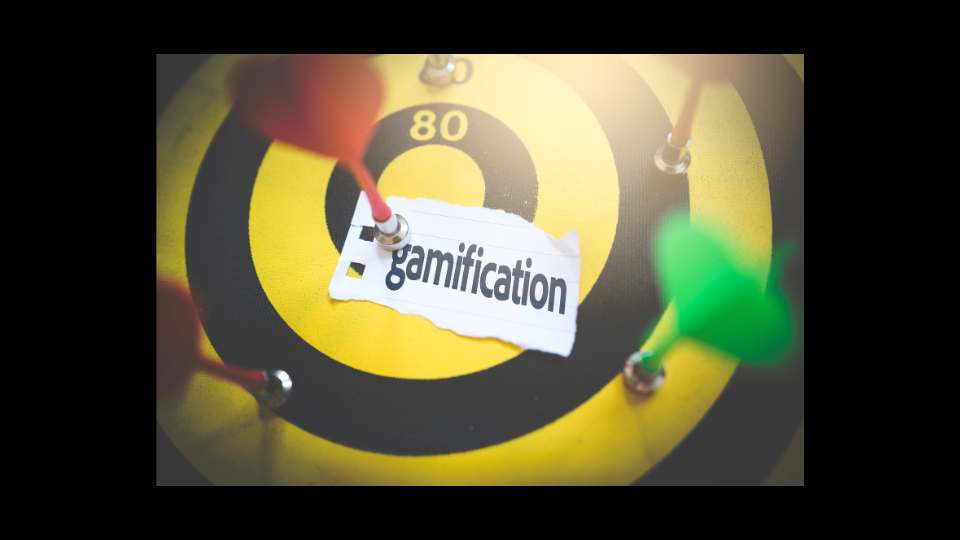Your route to excellence – a word of introduction
Your route to excellence. The events of the last two to three years have put huge pressure on the profitability of many organizations. Lost sales, rising energy prices, increasing wage bills and difficulty recruiting have all contributed, leaving many senior teams considering how they can reduce their operating costs to recover that lost profitability. Throughout the business, there is a strong focus on “making savings” or “cutting costs”. Individuals, departments and teams all do their bit – winning new business, eliminating what seems like “marginal activity”, and identifying “things to fix” that will make processes run more smoothly and efficiently and hence save time. And time equals money! And yet, somehow, the cost benefits don’t seem to make their way to the bottom line. Indeed, in many cases, overall costs somehow go up – how can that be?
A deeper investigation often reveals an uncomfortable reality. Savings and improvements in one area can have unforeseen consequences in other areas. Perhaps that “marginal” activity is actually responsible for a disproportionate amount of revenue. I heard one story recently of one service being offered being cut to save £X resulting in a loss of income of EIGHT TIMES £X!!! How crazy is that! What’s missing is a lack of a “holistic view” of how to deliver benefit to the entire organisation, through seeing each potential improvement considered in the context of a bigger picture of how we improve the performance of the complete “system” – i.e. the operation of the organisation as a whole – by understanding the upstream and downstream impact of every action and how they all link together. My experience over 30+ years has taught me that going for “quick fixes” rarely has anything more than a short-term benefit, if that. Organisations wishing to deliver sustainable benefits over the long haul have to dig in and do the hard work of taking a more “joined up” approach. That’s not to say that there won’t be short-term gains – there certainly will -but more that the short-term actions will be set in the context of a longer journey in a consistent direction towards sustainably high performance.
Creating a “routemap” for improvement
In our last article we considered one aspect – creating a powerful vision for the “future state” of the operation by looking at the “conditions” necessary for higher levels of performance in every aspect. We now go on to consider how we turn that vision into a high level “routemap” for action. After all, having that clarity of vision is only the first step and, no matter how much we might wish it, it won’t be achieved overnight. Putting in place the beliefs, attitudes, behaviours, skills, structures and processes takes work. Others in the organisation need to be ready to accept and work with the changes proposed. We need a structure.
It all depends where you start from
We’ve all heard a version of the story of the traveller who stops to ask for directions only to be met with the response; “well, I wouldn’t start from here!” In my previous corporate life and while working as a consultant, I’ve come across other practitioners who seem to adopt the same philosophy to supporting organisations with every OpEx transformation. No matter what the current situation of the client organisation, they seem to have a fixed sequence of steps they apply that assumes – implicitly or explicitly – that they are starting with a blank page. Which, unless you’re starting a new company or creating a new location, is rarely the case. It’s typically far more a brownfield rather than a greenfield site.
Every organisation will have a unique starting point:
- Different challenges facing the business
- Different existing capabilities and knowledge
- Different aspirations for the future
So how can a standard approach possibly fit? Recognising the reality of these differences is, for me, a key part of building a sustainable solution and working out how I can best help the client. That said, there is a reliable process I go through with almost every client to create that unique routemap, so let’s dive in.
Understand your current situation
Looking more closely at your current situation is always a great place to begin. It will help you to really understand what you’ll need to work on to create the conditions for your vision. Equally, you’ll get a good picture of what you have to work with. All too often we only look for those things that need to be improved, yet that’s only part of the story. So, as well as looking for what needs to change, look at what’s working well, what existing capabilities you have that will be helpful on the journey and so on. Go and see for yourself. Talk to everyone. As far as makes sense at this stage – and we’ll come back to this later – explore why things are the way they are. They haven’t happened by accident (I hope) so this will give you more clues about what action you may need to take. It can often be helpful to draw out the processes used – value stream or process mapping are great tools – and look at what the data is telling you. In doing all this – very much in the same way as we took a multi-facetted view of the vision – you will build up a really rich picture of the organisation as it is now. This will leave you well-prepared to start the next step.
Define the Gap to the Vision
At its simplest (and why make anything more complicated than it need be?) the “gap analysis” between the current situation and the conditions required to deliver your vision is little more than putting the two side-by-side and identifying the differences.
Of course, you might discover elements that don’t line up. No problem – you’ve either spotted a missing part of your vision or a gap in your understanding of the present. These are easily filled.
There may, however, be one further aspect to consider at this point. If the “gap” between your current situation and your vision seems large, it may not be possible to identify clearly all the steps required. In such a case, it may be worth defining an intermediate “target condition” as a step towards it. This is, in effect, a “mini-vision” for an intermediate stage for which you can define the actions required more precisely. In working towards that, you will learn more about what is required and be able to map out the rest of the journey more precisely or define the next “target condition” and repeat the process.
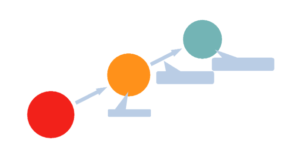
Pic.1
Create the map
To help with this next step, imagine all of the different elements of the “gap” that you have identified as individual sticky notes. In this stage we’re going to examine them for:
- Type and connection: are they major items or supporting activities; how do they link together
- Priority: in which order would we like to tackle them
- Dependency: are there dependencies that require a particular order, irrespective or the assessed priority
- Urgency: there may be some actions that are required more immediate action irrespective or the assessed priority
From these sub-steps we will establish an action sequence the defines our routemap.
Type of activity
At the start of this process you may have in front of you a whole load of different “areas for development or improvement.” Take a closer look at them, and you’ll most likely find that they are of several types. Some may be processes to fix, some may relate to attitudes and behaviours, some may be bits of IT systems to develop and so on. How do they all fit together? Are some detail points related to others. A great way to help sort this out is to use an Affinity Diagram – a organised method for grouping sticky notes by similar themes – and then creating a “logic tree” similar to the diagram shown to show how they are all connected.
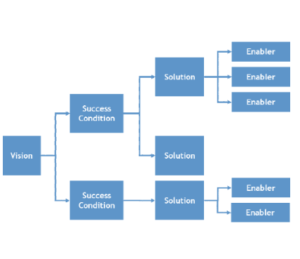
Pic.2
Priority
The second step is to consider priority, i.e. which we tackle first, second etc. I normally use a simple four box chart where one axis is “ease of implementation” – blending together elements of effort and cost – and the other “impact” – the benefit to the organisation of making this improvement. I’ve seen 3×3 versions with High-Medium-Low or 3D versions where effort and cost are separate axes, yet most time the simple one is enough. The High Impact, Easy to Do are likely to be “quick wins” that will deliver great results in a short time and don’t need huge amounts of planning and management. Next on the list will normally be some of the High Impact, Difficult ones. The benefit they deliver is necessary to deliver the vision, yet the difficulty means they may take longer or will involve some more complex activity, dealing with some sticky people issues or whatever. They are more likely to be set up as “mini-projects” that involve more people and need careful management. Decisions about those that fall into the other two boxes can be a little more tricky. You have to wonder about the value of the low impact ones, yet tackling some of the easier ones may be a valuable way of engaging a particular individual or group in the wider effort so they can play a part in some of the other activities. The value of tackling the low impact, difficult activities may be questioned and decisions are often made to set those activities to one side once this basic level of analysis is done. However, there could be other factors at play that may need them to be done anyway.

Pic.3
Dependency
We have already considered how all of the elements might fit together to deliver our overall vision, so dropping some of the activities out just because they have little value in themselves and are difficult may be unwise. These activities may be essential pre-requisites for some of the high value activities. A simple method to consider this is a diagram like the one here, where we explore the links between activities. Arrows are drawn between them where there are dependencies, with the arrowhead showing which must be done first. This information will be invaluable when we come to planning and consider the sequence in which we have to undertake the activities.
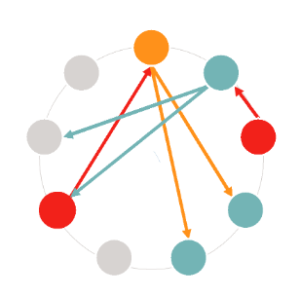
Pic.4
Urgency
The final consideration before we create our routemap is to consider whether there are any other factors that impact the order in which we undertake tasks, in particular those which have some urgency. Key among these is what are often referred to as “customer protection” measures, i.e. those actions necessary to deal with immediate customer concerns while we undertake the longer-term corrective actions. These may be activities like extra checks, rework and so on that have little place in our “future world”, yet are necessary to ensure that the business continues while you work towards the vision. I’m reminded of the surgeon who said, “the operation was a great success, but sadly the patient died!”
Now you can create your map
With all of the information from the steps above, you are well set to create your map. My favourite way is to create what project management specialists call a “network diagram”, which maps out all of the activities in sequence and shows their interdependency, at this stage without detailed timings, from which a Gantt chart is developed to create a timed plan, people and resources are allocated etc. Those more used to an Agile approach may simply create a list of all the ToDo tasks in order and start to pick them off a small number at a time. As each is completed, the next one from the list is selected and so on. You might choose to use some sort of framework to further group activities, identify owners etc, and thus break down the long list of activities by individual, department, value stream or whatever. The key here is to create a map and approach that fits well with your organisation and that will maximise your chances of success. I suspect I’ve never used exactly the same approach every time, even though the underpinning principles and ideas have remained constant. In all cases, it’s important to review the plan on a regular basis and respond to evolving events. Afterall, this is an exploration of a new land waiting to be discovered more than navigating a well-developed motorway network. You don’t know what unexpected difficulties may occur, or which parts you expected to be really tough are navigated with surprising ease. It truly is a case of Plan-Do-Check-Adjust until you reach your destination. But more of that in future articles.
The road ahead
From my experience working with many
organisations in the
manufacturing and supply chain operations space is that, whatever the immediate challenges to be addressed are and, whatever the starting point, there soon emerges a sensible order for the themes to be tackled. What varies, derived from the gap analysis, is the detail of the steps beneath. The illustration below is an example of such a map, based on a couple of real client examples. It is Your route to excellence.
As you see, the starting point and detail are different between the two clients yet, like so many others, many of the aspects covered are very similar. With that in mind, over the next few months, I’ll be unpacking the key points of the various elements in the hope that they assist you in navigating your route map.
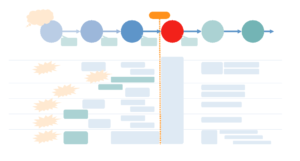
Pic. 5
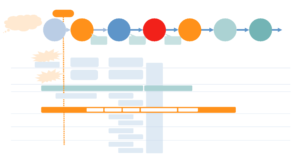
Pic. 6
- It all starts with leadership: what is the role of leadership in a high-performing operation, and how does it differ from traditional models we may have encountered? We’ll talk about inspirational, empowering servant leadership, the leader as coach and creating an environment for others to flourish.
- Everybody, everywhere, every day: a foundational element of Operational Excellence is “respect for people” – valuing the uniqueness and potential of everyone in the organisation. We’ll talk About the need for psychological safety, everyone being identifying and acting on opportunities to improve both the organisation and themselves to create a high-performing culture.
- Why are we here?: uniting everyone around a common sense of Purpose is key. We’ll talk about who we are serving, what their requirements and expectations are and how we connect everyone’s work to that p[urpose to provide meaning and focus.
- Play a game you can win: all too often plans are defeated before you start. They are based on vague notions of capacity and capability more in hope than confidence. We’ll talk about understanding true capacity and capability and how to create a plan that is agreed be everyone and that they are committed to deliver.
- On Time, In Full, No Errors: The goal of any operation is surely to deliver what the customer wants, when they want it and to the standard they expect, while also meeting internal cost targets to ensure profitability. We’ll talk about establishing the appropriate processes, routines and disciplines to achieve these goals consistently without excessive effort
- A culture of continuous improvement: No matter how good we are, there is always room to improve. We’ll talk about the importance of solving problems so they don’t re-occur and establishing routines for continuous improvement such that it becomes “business as usual”.
- A long-term, sustainable future: many businesses are successful for a season. Very few are successful over the long haul. What makes the difference? We’ll talk about a wide range of topics from considering people and planet as well as possible, people development and succession, agility, resilience and long-term perspective.
Where next? Will you join me?
I hope that has whetted your appetite for the journey ahead. Short-term action set in a long-term perspective to ensure sustainability. I do hope you’ll join me.
Want to go deeper?
In addition to this series of articles, we are preparing a series of workbooks, the first two of which will be available on our website in the next few weeks. Watch out for them or, if you’d like to be notified when they’re available, drop me an email or complete the contact form on our website.
Can’t wait Your route to excellence?
Harvey Leach is passionate about helping organizations acquire the knowledge, skill, and culture they need to achieve Operational Excellence. Following a successful career in the automotive industry with Rover and BMW Group, where he worked in a variety of roles covering R&D, production and corporate strategy, Harvey has worked as a consultant, trainer, and coach since 2004. He delights in seeing teams “come alive” as they discover how they can apply the same principles that underpin some of the world’s leading companies to their organization to achieve impressive improvements in performance and more fulfilling lives.








